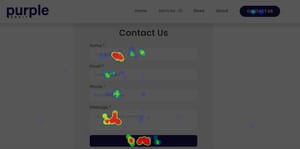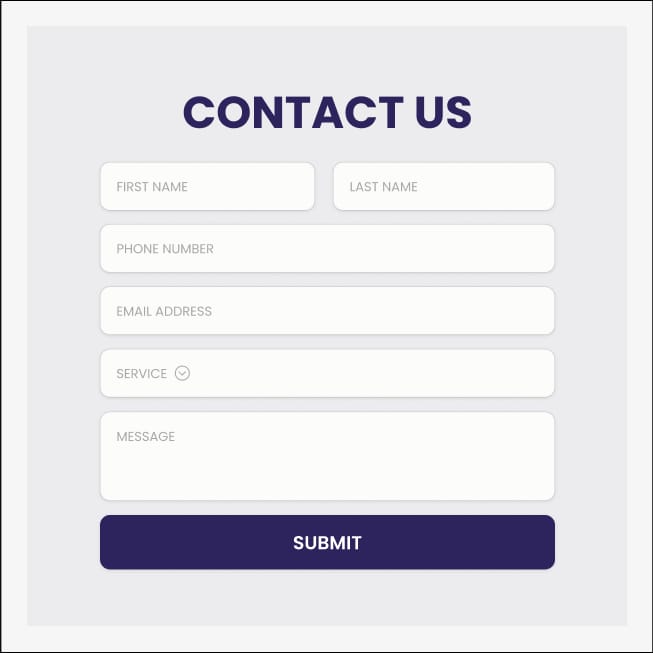Maximising Your Website’s Potential with Conversion Rate Optimisation
If your website isn’t driving the leads you need, it could be time to look at your conversion rate.
What is Conversion Rate optimisation(CRO)?
Conversion rate optimisation is the process of reviewing and updating the design or your website to make it easier for a visitor to your website to complete the desired task. This could be making a phone call, filling in a form or downloading a document.
Conversion rate is calculated by dividing the number of conversions, or completed interactions, by the number of sessions on your website. This percentage can help you estimate how many conversions and sales you’re likely to get from your website.
Our aim is to always be improving the conversion rate of your website to make sure you get the best possible return on any marketing you’re doing.
If your website has a poor conversion rate, there’s little point in running a PPC or social campaign because you’ll be wasting a significant portion of that investment by sending users to a poorly performing website. If you’re investing in your marketing we want to make sure that your website has the best possible chance of converting any visitors into leads and sales.
When should you invest in Conversion Rate Optimisation?
You should spend time reviewing the conversion rate of your website before any significant design changes to your website or before adding new sections. This is so you understand the current performance of the website and don’t make changes that will negatively impact the website.
For example, before creating a new design for a website we would always like to run heatmapping software to see what’s currently working and which elements are being used or ignored by your users. We would then take these learnings into the new website design to create a website that works for you and your users to give you the best return on investment.
What is typically involved in conversion rate optimisation?
The process of CRO involves methodically reviewing data about the performance of the website to make evidence supported decisions about the design and functionality of the site.
There are four key sources of data we like to capture for a website analysis, this includes heatmaps, scroll maps, visitor recordings and user surveys.
Heatmaps & Scroll maps
Heatmap software records every interaction on your website and then shows you where users are clicking on the page. This report will show you which elements are being most heavily used and which are being over looked. This report is great for seeing if users are interacting with call to actions across different page designs.

Scroll maps are similar to heatmaps but they show you have far down a page a user scrolls before exiting the page. This can help you determine if your content is engaging or if the design naturally directs users to key elements of the page. For example, if your form is only at the bottom of the page and nobody is scrolling to it we would consider adding buttons to take users directly to the form further up the page.
Visitor Recordings
This software tracks users mouse movements and interaction patterns so you can review how a visitor uses your website. This gives you more data than a heatmap which will only show you final clicks, a recording will show you if users hover over an element and change their mind, if they scroll up and down the page before clicking or if they ‘rage click’ on something that doesn’t load fast enough.
User Surveys
To take advantage of survey data we can create a set of questions to ask your users about the website. This can be as simple as “Did you find the phone number easily?” or “On a scale of 1 to 5, how easy was it to fill in the form?” all the way through to create a custom scenario for a user to complete and giving feedback after they complete the task.
This first hand data is invaluable when looking for a fresh perspective on your website design, and when the data comes directly from your target audience it’s even more valuable. For example if you are designing a website with strict accessibility requirements it would be important to collect feedback from members of this group to make sure your website is tailored to their needs.
What are common conversion rate mistakes?
Even though every website is different, there are certain things that always stand out that we know from experience will be hurting the websites’ conversion rate.
For example, having poor and inconsistent calls to action will massively harm your conversion rate. If it’s not clear what a button does, or where it will take a user they’re far less likely to click on it. Also, when you’re deciding button text think about the level of investment needed to get a user to click. It’s a lot less of a potential investment for a user to click ‘Enquire Now’ instead of ‘Book An Appointment’ so think about where and how you’re using buttons within the design.

Following on from this, having unnecessarily complicated forms will put users off from converting. Have your forms only collect the information you need to complete the sale or action making it more likely that you’ll get the conversion and capture user data. You can always ask more questions when you start speaking directly to your customer as part of the sales process.
What is our process for carrying out a website analysis?
Firstly, we’ll determine which data and tools are right for your website. We work with and use a range of software to capture data about your website including HotJar, Microsoft Clarity and Zoho PageSense.
Once we’ve determined which methods are right for your project we’ll add any necessary tracking codes to your website to start gathering data. Depending on the average traffic to your website this can take anywhere from two weeks to one month. The next phase once we’ve collected data is reviewing everything collected and putting together a list of recommendations.
If you’re ready to design a new website we’ll take these learnings into the design, being sure to keep what works and improve what doesn’t. If you’re not having a website redesign we’ll put together a list of recommendations to either implement or test on the website to determine their impact on your conversion rate.
If you’re like to know more about our process for analysing a website or about our Conversion Rate Optimisation service contact our team today for a quick chat and to get a quote.
Wed, 07 February 2024

